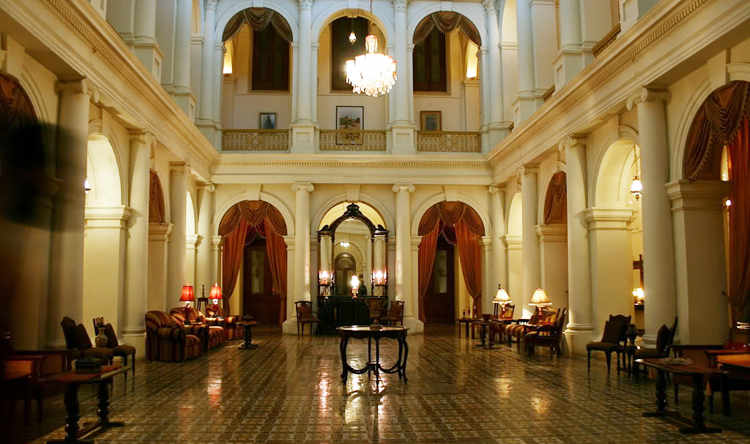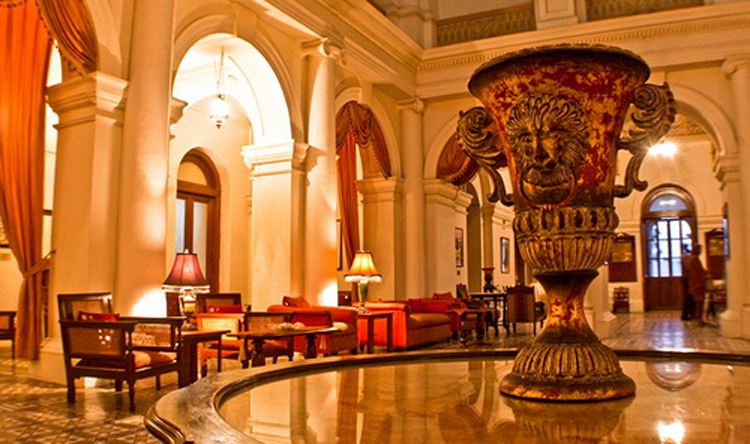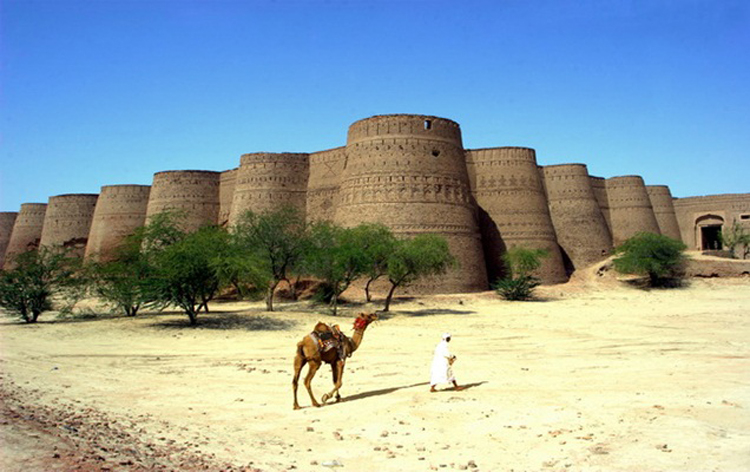
Written by: Aamna Javed
Posted on: July 15, 2015 |  | 中文
| 中文
Noor Mahal, Bahawalpur
The Princely State of Bahawalpur was established in 1802 by Nawab Mohammad Bahawal Khan II, and acceded to Pakistan on 7th October 1947. The predominantly Muslim population of the area supported Muslim League and the Pakistan Movement, and after the accession the Hindus and Sikhs from the area migrated to India while the Muslim refugees from India settled down in the Bahawalpur State.
The Noor Mahal, constructed in 1872, is the most significant landmark of Bahawalpur. Property of the Nawab of Bahawalpur under the British Raj, it is now under the control of the Pakistan Army. The design of the Palace encompasses the Corinthian and Islamic styles of architecture, with a tinge of sub continental elegance. A hidden gem of the state, Noor Mahal is open to public but has remained out of sight because only a few are acquainted with it. This is one of reasons the palace has managed to retain its grandeur and glamour of the past.

Besides the Noor Mahal, Darbar Mahal is another historic Fort located in the city of Bahawalpur. Similar to Noor Mahal, it is also under the control of the Pakistan Army. The vast gardens of the palace are a popular tourist attraction as they provide a picturesque view of the architecture resembling that of the ancient Mughal Forts, and highlight the typical fusion of East Indian and Arabian architectural techniques that were prevalent in the subcontinent during the 1800s.

These Mahals (Palaces) have a great potential to be utilized as tourist attractions owing to their architectural design, which is reminiscent of the pre-partition India and is deeply entrenched in the local culture. However, only a little part of the property is open to public and some parts of the gardens are only opened for hosting galas and official functions.
While exploring the historic region of Bahaalpur, the Gulzar Mahal and the Sadiq Garh Palace are also worth seeing. The Sadiq Garh Palace, with its lush green lawns, attractive domes and extensive verandas is another important tourist attraction.

In addition to that, the Bahawalpur Museum houses decades of history with artifacts from various periods, including the Mughals, Indus Valley Civilization and the British Raj. Although the museum is home to numerous historic items, the building is in need of serious renovations in order for it to garner some attraction from visitors.
At an hour’s drive from Bahawalpur City, there is the Derawar Fort. Built by a Hindu Rajput, Bhati of Jaisalmar, it was later captured by the Nawabs of Bahawalpur. A fort of enormous magnitude, its forty prominent bastions rise from the desert in a striking square formation, and are visible from miles away in the Cholistan Desert. With a circumference of approximately 1500 meters, the walls are 30 meters high. The location of the fort is such that visitors would have to seek the help of a tourist guide and would also need a four-wheel drive vehicle to make the long trip from the city to the fort.
With the new network of roads and railways being built under the China-Pakistan Economic Corridor project, for the purpose of providing connectivity, this unexplored region of the country can be utilized to attract tourists. However, special importance will have to be attached to the conservation and restoration of these historic sites.
You may also like: